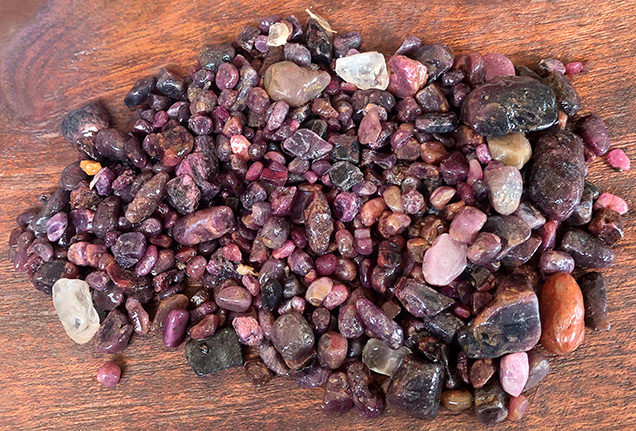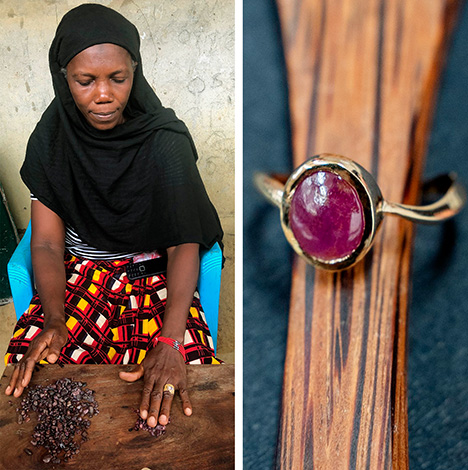Liberian Ruby

A gemological education can often prove useful in the most unusual of circumstances. On a recent trip to rural Liberia with the Japan-based NGO Diamonds for Peace (DfP), the author discovered a previously unacknowledged source of ruby. The original purpose of the visit was to deliver a rough diamond grading and valuation workshop to the miners working and living in 17 communities across Liberia. During the trip, the author stayed in the town of Weasua, one of the larger mining communities, to experience the standard of living and the general working conditions of the miners. The poverty is extreme. Most homes are without electricity, facilities, or running water, and only three functional water pumps exist for a population of 5,000, all of which place the health and the well-being of this community at risk. DfP has been working with this community since 2018 and has made significant inroads in supporting and improving the lives of these miners, but there is a long way to go, and strategies to aid their mission are continually being developed.

It was therefore fortuitous that during the visit, the author learned that there were other promising gem-quality minerals in the alluvial gravels the miners were collecting in their pursuit of diamond (figure 1). Upon initial inspection while on-site, the author noted material resembling corundum (primarily ruby), garnet, topaz, rock crystal quartz, and possible spinel. Samples were purchased from the miners for analysis, which came as a welcome surprise since they were unaware that these colored stones could carry any value (figure 2, left).
The author subsequently analyzed all the samples at the Gemmological Certification Services (GCS) laboratory in London. Using advanced and standard gemological testing, the identity of all the presumed gem-quality minerals of the collected specimens was confirmed. Particular focus was placed on the rubies due to their apparent abundance at the mine site, with the hope of providing another means of income for this community.
All ten samples tested were identified as corundum. Due to the nature of the rough material, standard testing was limited, beyond measuring specific gravity—which, averaging 4.0 across all samples, supported corundum. The ultraviolet/visible/infrared absorption spectrum, with its chromium-associated features, was also consistent with ruby. X-ray fluorescence analysis of the trace element chemistry revealed 1029–2377 ppm iron and 721–2915 ppm chromium, with low levels of gallium (54 ppm) and vanadium (53 ppm).
Generally, the color of the alluvial material collected ranged from pinkish gray to a deep purplish red, with sizes varying from 6 to 14 mm (1.45–15.90 ct), although the author was shown larger pieces on-site. All of the material showed a moderate to weak red fluorescence response in long-wave UV and inert to weak red in short-wave UV, consistent with high-iron ruby due to the quenching of Cr3+-associated fluorescence by iron. The majority of the samples showed lamellar twinning, surface-reaching fractures, and iron staining. The material was translucent to opaque, meaning that clear observation of any other inclusions was limited.
Although the material is not considered high-quality ruby, some of the better pieces have been polished to create attractive cabochons (figure 2, right). Diamonds for Peace is currently developing a business plan to monetize this material for the benefit of the community. The GCS laboratory will continue to support Diamonds for Peace as that organization explores this new potential avenue of income for the miners of Weasua.



